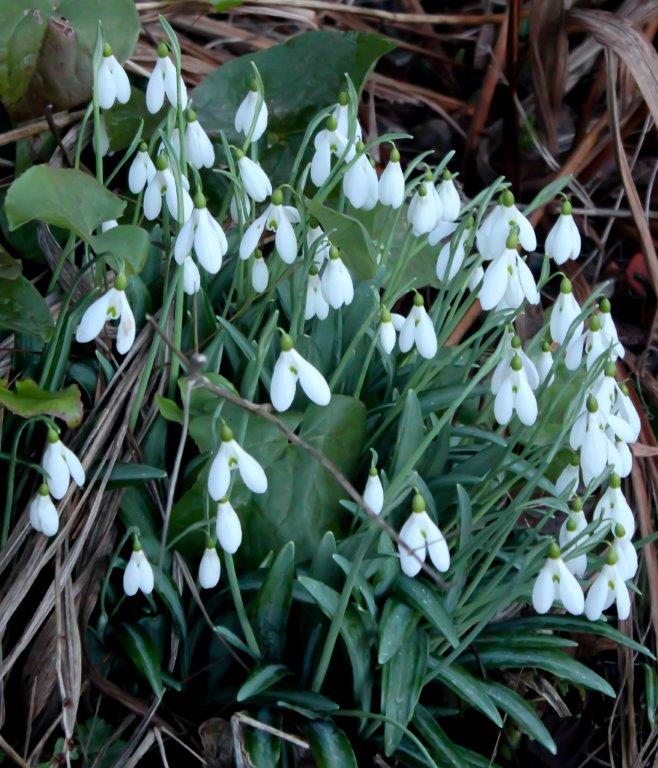
January has been the wettest on record, February can be the coldest (hopefully not!) but at least it is the shortest and heralds the spring. Once the first snowdrops appear, I feel that the growing season has begun!
Snowdrops are often lifted after flowering and sold ‘in the green’, if you bought some, replant them as soon as possible, water well, reduce the leaf size if they show signs of stress and feed them with a dilute high potash liquid fertiliser or liquid seaweed to help them recover. If you are moving clumps, do so when they looking their best, (see image) teasing the roots carefully apart, transplant, then feed and water in the same way. However, if you can mark the spot and move them when dormant in June, you stand a greater chance of success.
By the end of February you should be thinking about ‘chitting’ your potatoes. ‘Chitting’ or sprouting first or second early potatoes by allowing several shoots to develop before planting, encourages faster growth, heavier crops and is a way of beating the weather. Timing is the key – start them off about six weeks before the last frost in your area, when the soil has warmed up – there is no point in planting them when the soil temperature is below 7 deg C (45 deg F), because they just won’t grow, so time it carefully. Put a layer of potatoes in a shallow tray or egg box with the ‘rose end’ (where most of the ‘eyes’ or dormant buds are concentrated) facing upwards, in a light cool frost free place at about 7 deg C (45 deg F), wait until they reach 2.5cm (1”) long and take care not to break the shoots when planting. For smaller crops of large potatoes, remove all but the three most vigorous shoots; leave all of the shoots for a higher yield of smaller tubers. Have horticultural fleece or sheets of newspaper standing by in case of unexpected frosts after the first shoots appear from the ground. If you chit several different varieties over a period of time, you can harvest new potatoes over several months.
It is also time to prune summer flowering clematis. Those flowering from June onwards need cutting back to a pair of plump buds about 30cm above the ground or at a range of heights to provide the cover you need. Left unpruned, they start flowering well up the stems, leaving an unattractive, bare base. Clematis in this group include the large flowered hybrids, Clematis texensis, Clematis vitalba and Clematis orientalis and their cultivars.
Once temperatures rise above 5deg C, hardy herbaceous plants and grasses begin to grow. Before this happens, carefully cut back dead plant material making sure you don’t accidently cut back any new growth that has emerged underneath the dead plant material. Compost all of the debris, remove any weeds that may have germinated in open soil over winter, then mulch with composted bark or peat free compost. Make sure that the ground is not too wet before walking on it as you this will damage the soil structure. Happy Gardening, Matt


